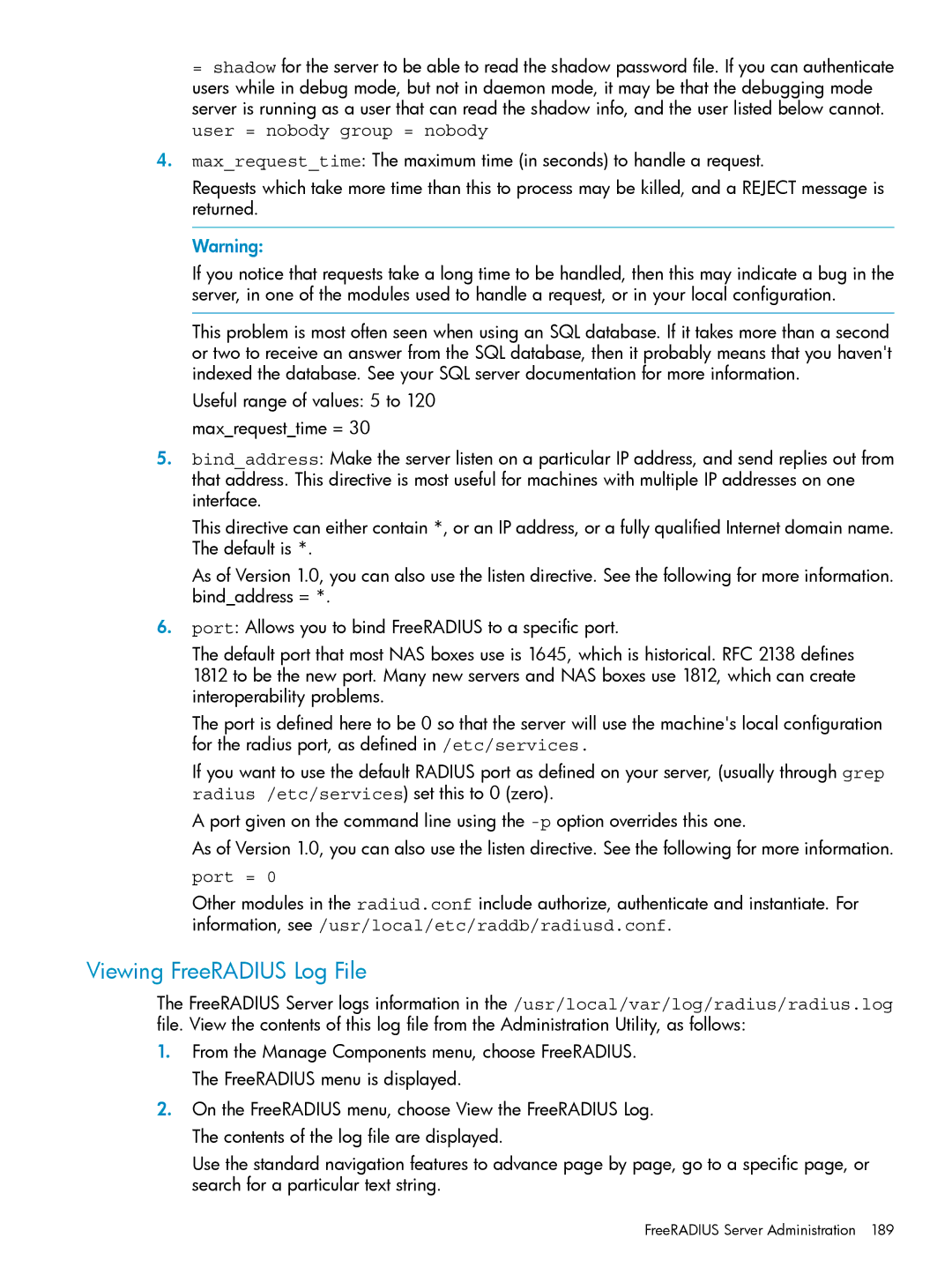
= shadow for the server to be able to read the shadow password file. If you can authenticate users while in debug mode, but not in daemon mode, it may be that the debugging mode server is running as a user that can read the shadow info, and the user listed below cannot. user = nobody group = nobody
4.max_request_time: The maximum time (in seconds) to handle a request.
Requests which take more time than this to process may be killed, and a REJECT message is returned.
Warning:
If you notice that requests take a long time to be handled, then this may indicate a bug in the server, in one of the modules used to handle a request, or in your local configuration.
This problem is most often seen when using an SQL database. If it takes more than a second or two to receive an answer from the SQL database, then it probably means that you haven't indexed the database. See your SQL server documentation for more information.
Useful range of values: 5 to 120 max_request_time = 30
5.bind_address: Make the server listen on a particular IP address, and send replies out from that address. This directive is most useful for machines with multiple IP addresses on one interface.
This directive can either contain *, or an IP address, or a fully qualified Internet domain name. The default is *.
As of Version 1.0, you can also use the listen directive. See the following for more information. bind_address = *.
6.port: Allows you to bind FreeRADIUS to a specific port.
The default port that most NAS boxes use is 1645, which is historical. RFC 2138 defines
1812 to be the new port. Many new servers and NAS boxes use 1812, which can create interoperability problems.
The port is defined here to be 0 so that the server will use the machine's local configuration for the radius port, as defined in /etc/services.
If you want to use the default RADIUS port as defined on your server, (usually through grep radius /etc/services) set this to 0 (zero).
A port given on the command line using the
As of Version 1.0, you can also use the listen directive. See the following for more information. port = 0
Other modules in the radiud.conf include authorize, authenticate and instantiate. For information, see /usr/local/etc/raddb/radiusd.conf.
Viewing FreeRADIUS Log File
The FreeRADIUS Server logs information in the /usr/local/var/log/radius/radius.log file. View the contents of this log file from the Administration Utility, as follows:
1.From the Manage Components menu, choose FreeRADIUS. The FreeRADIUS menu is displayed.
2.On the FreeRADIUS menu, choose View the FreeRADIUS Log. The contents of the log file are displayed.
Use the standard navigation features to advance page by page, go to a specific page, or search for a particular text string.
FreeRADIUS Server Administration 189
